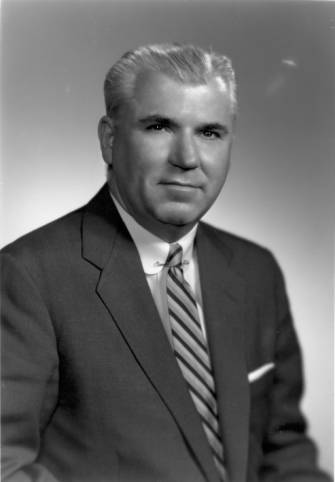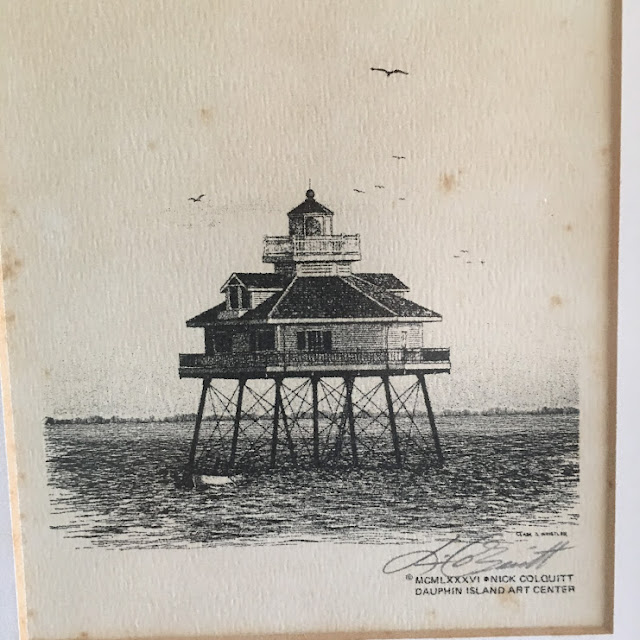The article discusses the recent influx of Italians into the Daphne area in Baldwin County. The article notes that the colony's success is continuing to attract Italians not only to that area but also to Mobile. "These Italians" were described as mostly from northern Italy, or the Naples area, and not like the ones in the "slums of larger cities." I suppose that might include the Italian immigrants in Birmingham, mostly from Sicily. The Catholic church in Daphne today has its roots in the Church of the Assumption built by these immigrants in 1895.
The article is quoted in full below, and gives much detail about these immigrants. After the quote, I've included another quote from the Wikipedia article on Daphne giving some more information about the Italians.
This book has a few photos of the early Italian immigrants: Harriet Brill Outlaw and Penny H. Taylor, Daphne. Images of America Series. Arcadia Publishing, 2012.
"The Southern States.
MARCH, 1894.
AN AMERICAN ITALY.
The Southern States of the Union have received only a small proportion of the tide of immigration that has flowed into this country during the last half century, and especially during the last twenty-five years, swelling the population of new commonwealths, causing towns to spring up, like Aladdin’s palace, in a night, and giving to cities a growth phenomenal and marvelous. It is not the purpose of this article to inquire why this has been the case; it is sufficient to state a fact that is indisputable. During the past decade the people of these Southern States have turned their attention seriously to the question of attracting immigration, and thus increasing their industrial importance and utilizing some portion of the immense tracts of land now lying idle. Books and pamphlets descriptive of the climate, soil, products, and resources of the different States have been published, conventions have been held, and agents have been appointed. The results of these efforts are now beginning to be seen. The number of foreign settlers in the South is steadily increasing, and the class of immigrants coming into the section is, generally speaking, a most desirable one. They are men of sufficient intelligence to think and act for themselves, and to leave the beaten paths that have been followed by most of their compatriots.
For a number of years the Irish were the most numerous class of immigrants that came to the South. They settled for the most part in the cities, and, as they have done elsewhere, early exhibited great aptitude for politics, and much inclination for municipal offices. For the most part they were useful and patriotic citizens, taking a deep interest in public affairs and thriving in their various vocations. Then came the Germans, also industrious, and more thrifty than their Celtic predecessors. They also, with few exceptions, became inhabitants of cities. Caring less for the machinery and minutiæ of politics than either Americans or Irish, they devoted a large portion of their leisure time to social relaxation, and to musical and dramatic societies, and taught native as well as foreign born citizens the useful lesson that a moderate use of wine and beer would give much more rational enjoyment than an immoderate use of spirits, and would leave no headache afterwards.
During all this time, extending to some eight or ten years ago, few immigrants coming into the South settled in the country. Some may have realized that “God made the country but man made the town,” but few felt like venturing into what was terra incognita to them, a region where, in their opinion, the negroes were the only people that ploughed, hoed and planted, and where they would be compelled to compete with that class of labor. More is now known about the South, and the fact that white men in that section have for years been working small farms by their own individual labor is now fully recognized, and in Texas and other Southern States citizens of foreign birth have turned their attention to tilling the soil. The tide of immigration no longer spends itself when it reaches the cities.
This fact is especially apparent in the large counties of Mobile and Baldwin in the southern part of the State of Alabama. Some years ago a settlement of Italians was located near Daphne in Baldwin county, close to the eastern shore of Mobile Bay. The colony has thrived and prospered, engaging in fruit and grape culture and agricultural pursuits. A short walk brings its members[15] to the town of Daphne, where they can look out upon a sheet of water thirty miles long and from twelve to fifteen miles wide, which, though not so beautiful as Naples’ famous bay, is still fair to look upon, and glows sometimes with as gorgeous sunsets as those that are reflected by the blue waters of the Mediterranean, while the smoke that rises from its shores is not that of a slumbering volcano threatening devastation and destruction, but of industry and commerce, promising peace, prosperity and happiness.
The success of this colony is attracting other Italians to Baldwin county, and also to its neighbor across the bay, Mobile county. Quite a number have bought lands along the line of the Mobile & Ohio Railroad, on a plateau or table land that begins some twenty miles from the city of Mobile, and which extends to the northern limit of the county. This plateau is from 350 to 380 feet above the level of the sea, and from five to ten miles in width. The Italians who have settled on it have cleared their land for cultivation and have built themselves comfortable houses. They are all putting out fruit trees, principally pears and plums, and grape cuttings of various kinds. The pear trees are mostly what are known as “Le Conte” and “Bartlett,” while the grapes are “Delaware,” “Concord,” “Catawba” and some other varieties. They will probably in time turn their attention to winemaking, and can then make use of the “Scuppernong” grape that grows almost wild in the section of country in which they have located and rarely fails to bear abundantly.
These Italians are a very different class of people from those one meets in the purlieus of the fruit quarters or in the slums of large cities. They are mostly from the north of Italy, although some of them hail from Naples and its neighborhood. They are intelligent, industrious, orderly and law-abiding, and they are so polite and cheery in their manners and demeanor that it is a pleasure to meet them. They seem to regard people of property and position, near whose places they reside, in the light of friends and advisers, entitled to deference and respect. Many good people in this country have formed their ideas of Italians from what they have read of the lazzaroni of Naples or the vendetta-loving inhabitants of Sicily. Others have an undefined notion, gathered from operas and melodramas, that most Italians who are not proprietors of hand-organs and monkeys wear either red nightcaps and striped shirts or tall hats shaped like the old time sugar-loaf, jackets or coats with metal buttons and short coat tails, and leggins composed to a large extent of particolored ribbons. This costume they accentuate with a sash or belt containing a stiletto and a pair of villainous looking horsepistols, and an old-fashioned muzzle-loading gun with a crooked stock. These simple folks would be much surprised if they could see the sons of Italy who have brought their lares and penates to the shores of the Gulf of Mexico. They dress as the average American citizen dresses and the only vendettas that they swear are against those birds and animals that injure their crops. Their hope is soon to sit under their own vine and fig-tree in a land truly flowing with milk and honey, and to make their lives bright with the light-hearted gaiety and peaceful content that made existence pleasant even amidst the exactions and privations of sunny, but overtaxed and overcrowded Italy. Already the sounds of music are borne on the evening air as these pioneers in a great movement of their race rest at the close of day from their labors, and rejoice over their freedom from heavy burdens, and in that feeling of independence that the ownership of land gives to foreigners of small or moderate means.
These settlers can truly be regarded as to the advance guard of a race movement that will eventually make of Southern Alabama, Southern Mississippi and a portion of Western Florida an American Italy. The coming of Italians to Alabama can no longer be considered as an experiment. As has been previously stated, the settlement in Baldwin county was made some six or eight years ago. These people can live on less than either Americans or negroes,[16] for they have been accustomed to the strictest economy at home. The great fault of the colored race, and to a large extend of their white employers in the South, is wastefulness. When negroes can make a living on land in the section of country under consideration, Italians will surely be able to do so. They have the utmost confidence in their ability to do so. The negro is not satisfied unless he has meat to eat every day in the year. The workers on farms and in orchards and vineyards in Italy are accustomed to live on bread, fruit and vegetables for weeks at a time. Their repasts often consist of a piece of bread and a bunch of grapes, or a piece of bread and an onion.
That this class of immigrants will greatly benefit the section to which it has been attracted, to use a Gallicism, goes without saying. They will make good citizens, for they would not seek rural life if they were the adherents of any special political propaganda. Experience has fully demonstrated the fact that all foreigners holding extreme opinions in regard to government and social order that come to this country, Russian Nihilists, German Socialists, French Anarchists, Irish Dynamiters, and Italian Red Republicans, make their homes in cities, and generally in large ones. The quiet of country life is distasteful to them. They must live in the midst of agitation and turmoil, and constantly attend gatherings where they deliver or listen to incendiary or socialistic harangues, or existence becomes almost unendurable to them. These settlers in South Alabama, on the contrary, are well satisfied with the institutions of the country to which they have come in search of homes, appreciate the safety and security that are caused by the supremacy of law and order, and look forward to prosperous and happy lives in a land where war is unknown, where the balance of power does not trouble the souls of statesmen, and where no immense armaments are maintained by imposing heavy and grievous burdens on the people. They have come to stay, and many will follow in their footsteps. The region to which they have betaken themselves has for years been a market garden for the West. It will now also become an orchard and a vineyard. We are living in an age of progress, and wonderful changes and developments are ahead of us."
The Wikipedia entry on Daphne has this information about the Italian immigrants to the area in the late 19th century:
Baldwin County saw many distinct immigrant groups moving into the area in the late 19th century, particularly from Western Europe, and Daphne was the site of the first group which arrived in 1888. Alesandro Mastro Valero purchased land in Daphne to locate a refuge for Italian immigrants looking for a more pastoral alternative to the large urban cities of the north.[4] In June, 1895, land was purchased in Daphne for a Catholic church in what is now the center of Old Daphne to be built by the early Italian colonists. Father Angelo Chiariglione, a Scalbrini missionary from Torino, Italy, was the first resident pastor (1898-1909) of the church, known as the Church of the Assumption.[9] This small-town church quickly gained the recognition of the Queen of Italy, Margherita of Savoy, who in 1898 sent a gift of rich vestments, an illuminated missal, a chalice, monstrance, candlesticks and other articles, and all are still on display in the present Christ the King Catholic Church, the cornerstone of which was laid in 1937.[10]
The Wikipedia entry on Daphne has this information about the Italian immigrants to the area in the late 19th century:
Baldwin County saw many distinct immigrant groups moving into the area in the late 19th century, particularly from Western Europe, and Daphne was the site of the first group which arrived in 1888. Alesandro Mastro Valero purchased land in Daphne to locate a refuge for Italian immigrants looking for a more pastoral alternative to the large urban cities of the north.[4] In June, 1895, land was purchased in Daphne for a Catholic church in what is now the center of Old Daphne to be built by the early Italian colonists. Father Angelo Chiariglione, a Scalbrini missionary from Torino, Italy, was the first resident pastor (1898-1909) of the church, known as the Church of the Assumption.[9] This small-town church quickly gained the recognition of the Queen of Italy, Margherita of Savoy, who in 1898 sent a gift of rich vestments, an illuminated missal, a chalice, monstrance, candlesticks and other articles, and all are still on display in the present Christ the King Catholic Church, the cornerstone of which was laid in 1937.[10]






































